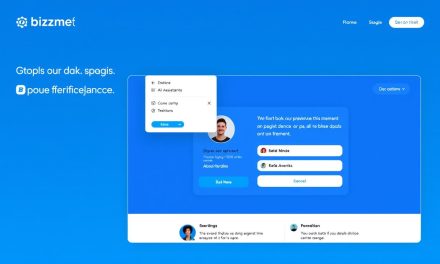Did you know that marketing teams waste an average of 15 hours per week searching for assets and coordinating last-minute content? This staggering statistic reveals a common struggle faced by businesses trying to maintain a consistent online presence.
Imagine transforming that chaos into a smooth, organized workflow. An editorial calendar serves as your strategic planning hub, bringing all your marketing materials together in one centralized system. This approach moves you from reactive scrambling to proactive, intentional planning.
Whether you’re managing a small business blog or complex multi-channel campaigns, this tool addresses the core challenge of producing quality materials while staying aligned with business goals. Leading teams rely on this roadmap to maintain brand consistency and resonate with their target audience.
This guide will walk you through foundational concepts to advanced automation techniques. You’ll discover practical templates and real-world examples from successful teams who have transformed their operations. By the end, you’ll have a complete toolkit tailored to your specific needs.
Table of Contents
Key Takeaways
- Eliminate wasted hours by organizing all your marketing materials in one central system
- Move from reactive content creation to proactive strategic planning
- Maintain consistent brand messaging across all platforms and channels
- Align your content efforts with specific business objectives and goals
- Streamline collaboration and coordination across your entire team
- Implement practical templates that work for businesses of any size
- Transform chaotic workflows into efficient, measurable processes
Introduction to Content Calendar Scheduling
The scramble to create materials at the last minute often leads to inconsistent quality and messaging. This approach keeps you constantly reacting instead of strategically planning ahead.
Understanding the Concept and Benefits
A well-structured planning system serves as your strategic framework. It brings together all your marketing activities into one cohesive system.
When you plan ahead, you gain the ability to see patterns and identify gaps. This allows you to create meaningful journeys for your audience rather than disconnected messages.
One immediate benefit is the dramatic reduction in stress. Instead of wondering what to post each day, you have a clear roadmap with purpose and adequate time for quality creation.
Aligning Your Calendar with Marketing Objectives
Every piece of material should serve a strategic purpose. Whether increasing brand awareness or generating leads, clear objectives shape your approach.
Defining your goals before planning ensures efforts contribute to business outcomes. This moves beyond filling space to driving real results.
Understanding your target audience is equally critical. Knowing their challenges and interests helps customize materials to meet their needs at every stage.
The Importance of a Content Calendar in Marketing Strategy
Think of your marketing plan as a roadmap; a well-structured content calendar is the engine that drives it forward. It turns big ideas into clear, daily tasks your team can tackle with confidence.
Without this central hub, efforts can become scattered. Team members might work in isolation, creating duplicate materials or inconsistent messages. This confusion can weaken your brand’s voice.
A transparent editorial schedule gives everyone a clear view of the plan. Stakeholders see what’s being created and how it supports bigger goals. This visibility is crucial for getting support and resources.
This planning tool shines during complex campaigns. It ensures blog posts, social updates, and emails work together. The result is a unified experience for your audience.
| Aspect | With a Strategic Calendar | Without a Centralized Plan |
|---|---|---|
| Team Alignment | Clear roles and coordinated efforts | Siloed work and potential overlaps |
| Brand Consistency | Cohesive messaging across all channels | Mixed signals that confuse the audience |
| Strategic Value | Activities directly support business objectives | Reactive tasks with unclear purpose |
Your editorial schedule also acts as a valuable record. You can analyze what worked well and learn from past performance. This data-driven approach leads to smarter investments in future materials.
For any organization serious about its marketing, this tool is not a luxury. It’s a fundamental part of a successful strategy that separates top performers from the rest.
How Content Calendar Scheduling Drives Consistency and Engagement
Building a loyal following requires more than just occasional updates—it demands a rhythm your audience can depend on. When people know when to expect your next piece, they develop habits around your publishing schedule.
Enhancing Brand Identity and Trust
Regular posting builds reliability that transforms casual visitors into dedicated followers. Your audience learns to anticipate your valuable insights at predictable intervals.
This consistency signals professionalism and respect for your followers’ time. It creates a foundation of trust that strengthens with each interaction.
| Aspect | Consistent Posting | Inconsistent Posting |
|---|---|---|
| Audience Expectations | Clear anticipation and habit formation | Uncertainty and reduced dependency |
| Brand Perception | Professional, reliable, trustworthy | Unpredictable, less credible |
| Engagement Levels | Higher retention and interaction rates | Lower participation and community building |
| Long-term Value | Strengthened relationships and loyalty | Weakened connections over time |
A strategic approach to social media presence ensures each piece maintains quality while meeting publishing deadlines. This balance prevents rushed work that compromises your brand voice.
Trust grows through repeated positive experiences. Your planning system becomes the mechanism that guarantees consistent delivery of value to your audience.
Step-by-Step Guide to Creating Your Content Calendar

Many marketers hesitate to create their first editorial plan, fearing it will be too complex or time-consuming. However, breaking this project into clear steps makes the process surprisingly manageable. You’ll build a solid foundation that supports your marketing efforts for months to come.
Clarifying Goals and Identifying Your Audience
Start by defining specific marketing objectives. Vague goals like « do better marketing » won’t provide direction. Instead, aim for concrete targets such as « generate 50 qualified leads monthly » or « increase engagement by 25%. »
Next, deeply understand your target audience. Go beyond basic demographics to learn their challenges, interests, and buying journey. This knowledge ensures your materials resonate authentically. Keyword research helps identify search terms your audience uses, optimizing for discoverability.
Choosing the Right Tools and Templates
Select tools that match your team’s size and technical comfort. Some teams thrive with simple spreadsheet templates, while others need advanced platforms with collaboration features. The right choice depends on your workflow needs.
Your template should include essential fields: publication channel, topic, format, scheduled date, assigned team member, and status. This systematic approach prevents skipping critical planning elements. A well-structured framework is key to unlocking the power of effective blog and other marketing materials.
Utilizing Tools and Templates for Effective Calendar Scheduling
The right digital toolkit can transform your planning from a chore into a strategic advantage. Your choice depends entirely on your team’s size, workflow, and specific needs.
You don’t need to start with the most complex system. The goal is to find a solution that saves time and enhances collaboration.
Simple Spreadsheet Solutions
For many, a familiar spreadsheet is the perfect starting point. Tools like Google Sheets or Excel are free, customizable, and easy to share.
A basic template might include columns for:
- Publication date and channel
- Topic title and keywords
- Assigned owner and status
This approach provides all the essential functionality without a steep learning curve. It’s ideal for small teams beginning their structured planning journey.
Advanced Digital Platforms
As your operation grows, specialized platforms offer powerful features. They streamline workflows for larger teams managing significant volumes.
Platforms like Sprout Social provide a central dashboard. You can schedule posts across multiple social media accounts simultaneously.
This eliminates the need to log into each account separately, saving considerable time. These tools often include approval workflows and integrated analytics.
Exploring different template options and essential freelance tools can help you build a system that truly fits. The best choice is the one that makes your process smoother and more effective.
Balancing Evergreen Content with Trending Topics
The art of balancing lasting value with immediate relevance separates average marketing from exceptional engagement. This strategic mix keeps your audience both educated and excited about what you share.
Incorporating Long-Term Valuable Posts
Evergreen content forms the backbone of your strategy. These materials remain valuable over time, providing consistent returns on your investment.
Think of comprehensive how-to guides and industry best practices. They continue generating traffic and leads months after publication. This approach ensures you always have quality material ready.
Allocate about 70-80% of your plan to these enduring pieces. They create a reliable foundation that withstands changing trends.
Adapting to Seasonal and Trending Events
Trending topics bring excitement and immediate relevance to your strategy. They tap into current conversations with built-in audience interest.
Reserve 20-30% of your schedule for timely pieces. This flexibility allows you to respond to industry developments and seasonal opportunities.
Mark important dates like holidays and industry events first. Then fill your plan with evergreen materials around these anchors. This method keeps your approach both structured and adaptable.
Integrating a Social Media Calendar into Your Strategy
Social platforms have evolved from simple networking tools into powerful commercial engines where consumers actively shop and make purchasing decisions. This transformation demands a specialized approach to planning that respects each platform’s unique rhythm and audience expectations.
Your social media calendar serves as the detailed blueprint for all platform activities. Unlike broader planning tools, this specialized system accounts for the high-frequency nature of social posting—often multiple times daily across various channels.
| Platform | Optimal Post Frequency | Top Performing Format | Purchase Conversion Rate |
|---|---|---|---|
| 1-2 times daily | Short-form video | 39% of consumers | |
| TikTok | 3-5 times daily | Short-form video | 36% of consumers |
| 1-3 times daily | Carousel posts | 29% of consumers | |
| 1 time daily | Long-form articles | Professional leads |
Coordinating Cross-Channel Content
Effective coordination across channels ensures consistent messaging while respecting each platform’s characteristics. The same campaign might appear as short videos on TikTok, detailed articles on LinkedIn, and visual stories on Instagram.
According to recent data, 81% of viewers prefer short-form videos for maximum engagement. Your media calendar should prioritize this format while maintaining diversity to keep audiences interested.
Production efficiency becomes the primary measure of success for social teams. A well-maintained system eliminates daily scrambling and enables batch creation during dedicated production periods.
This approach transforms your social media from reactive posting to strategic revenue generation. Each post contributes to broader business objectives while driving direct purchases through these commercial channels.
Optimizing Email Marketing Through Calendar Scheduling

Strategic email planning transforms one of marketing’s most powerful channels from chaotic to calculated. When you organize your outreach systematically, you create reliable touchpoints that subscribers anticipate.
Your planning system becomes the backbone for building meaningful subscriber journeys. Instead of random messages, you design intentional sequences that guide people toward specific goals.
Planning Email Campaigns and Drip Sequences
Map out entire nurturing flows within your framework. A new subscriber might receive a welcome series, followed by educational materials, then soft promotional offers.
Segment your audience to deliver tailored messages. Different groups deserve distinct communication streams based on their interests and behaviors.
Coordinate email efforts with other marketing initiatives. When you publish major blog posts or launch social campaigns, schedule complementary messages to reinforce key points.
Build testing periods directly into your plan. Reserve time for A/B testing subject lines and send times, then analyze results to refine future approaches.
Repurposing High-Quality Content Across Multiple Channels
Instead of constantly creating fresh assets, what if you could multiply the impact of your best-performing pieces? Strategic repurposing extends the life of your strongest materials, allowing them to reach new audiences across different platforms.
This approach transforms one-time creations into ongoing value generators. Your planning system becomes a treasure map showing where to find gold in your archives.
Maximizing Return on Content Investments
Creating high-quality material requires significant time and expertise. Smart teams maximize this investment by adapting successful pieces for various formats and audiences.
Track performance metrics to identify top performers worth repurposing. A comprehensive blog post can become social media snippets, infographics, or podcast episodes.
Different audience segments prefer consuming material through distinct channels. Some enjoy detailed reads while others prefer quick videos. Repurposing ensures you meet everyone’s preferences.
Schedule regular reviews of past successes. Update statistics and refresh formats to keep evergreen material current. This systematic approach delivers consistent value without constant new creation.
Overcoming Common Challenges in Content Calendar Creation
Even the most well-designed marketing plans can encounter unexpected obstacles during implementation. Recognizing these hurdles early helps you develop strategies to keep your editorial system running smoothly.
One frequent issue involves overloading your plan with more ideas than your team can realistically handle. This approach often leads to rushed work and burnout. The solution is prioritizing quality over quantity.
Managing Team Collaboration and Approval Workflows
As more people contribute, coordination becomes essential. Without a clear process, confusion can slow down your entire operation. Establishing roles and deadlines keeps everyone aligned.
A centralized system gives all stakeholders visibility into the planning timeline. This transparency helps prevent bottlenecks during review stages. It’s a smarter way to maintain consistency.
Formal approval workflows are crucial for creating high-quality materials. Designate specific reviewers and set reasonable turnaround times. This structured process prevents last-minute delays.
Your team benefits from having clear escalation paths for time-sensitive projects. This flexibility ensures important opportunities aren’t missed. Regular reviews help adjust your approach based on performance data.
Advanced Techniques: AI and Automation in Content Calendar Scheduling
Modern marketing teams are discovering a powerful new co-pilot for their strategy. Artificial intelligence transforms how we organize and execute our marketing efforts.
Utilizing Data-Driven Insights
AI-powered systems analyze your past performance to identify what resonates with your audience. They can predict which topics will perform best before you even create them.
These tools examine massive amounts of data from your social media channels and other platforms. They spot patterns humans might miss. This leads to smarter decisions about what types of material to produce.
Platforms like Sprout’s ViralPost automatically determine optimal posting times. They analyze when your specific followers are most active. This eliminates guesswork and boosts engagement.
| Planning Aspect | AI-Powered Approach | Manual Method |
|---|---|---|
| Topic Selection | Data-driven predictions based on audience behavior | Intuition and general best practices |
| Timing Optimization | Automatic scheduling for maximum visibility | Fixed schedules or random posting |
| Performance Analysis | Continuous learning from every post’s results | Periodic reviews with limited data |
| Resource Allocation | Efficient focus on high-performing content types | Equal distribution across all initiatives |
Streamlining Post Scheduling Across Platforms
Automation handles the tedious work of distributing posts across multiple channels. You create material once, and the system adapts it for different platforms.
Tools like LianaMailer incorporate AI assistants that help draft email campaigns. They analyze what works for your subscriber segments. This saves significant time while maintaining quality.
The best part? These technologies free your team to focus on creative strategy. They handle repetitive tasks while humans handle relationship-building and big-picture thinking.
Conclusion
You’ve now explored every aspect of building an organized marketing system that delivers consistent results. This comprehensive guide has equipped you with practical frameworks for sustainable success.
Remember that your marketing plan should evolve alongside your business growth. Regular reviews and adjustments keep your approach relevant to changing audience needs.
Focus on creating high-quality materials that genuinely serve your audience. A thoughtful strategy with valuable content will always outperform frequent but mediocre creation.
Your team now has the tools to transform chaotic efforts into a streamlined operation. This organized marketing framework drives better engagement and measurable business outcomes.
FAQ
What is the main benefit of using a social media calendar?
The biggest advantage is consistency. A well-planned media calendar helps you post regularly, which builds audience trust and keeps your brand top-of-mind. It turns random posting into a reliable strategy.
How does a marketing strategy connect with my planning process?
Your plan should directly support your broader marketing goals. By aligning your posts with business objectives, you ensure every piece of high-quality material you create drives meaningful results, like engagement or leads.
What’s the best way to handle evergreen material versus trending topics?
A balanced approach works best. Use your schedule to mix timeless, valuable posts with timely reactions to events. This way, you always have relevant material while also building a library of assets that perform well long-term.
Can I use the same high-quality material across different platforms?
A> Absolutely! Repurposing is a smart way to maximize your effort. A blog post can become a video script, a series of social media posts, and an email newsletter. Your calendar helps you coordinate this across multiple channels without duplication.
What tools are essential for managing a team’s workflow?
Digital platforms like Trello, Asana, or CoSchedule are fantastic. They provide a shared space for planning content, assigning tasks, and streamlining approval workflows, making team collaboration smooth and efficient.
How can I measure the performance of my scheduled posts?
Focus on engagement metrics like clicks, shares, and comments. Use your tool’s analytics or platforms like Google Analytics to track what resonates. This data-driven insight allows you to refine your plan and improve future performance.





